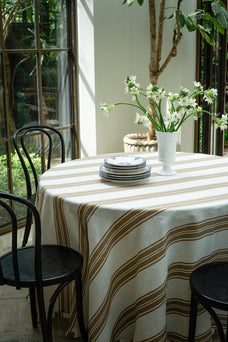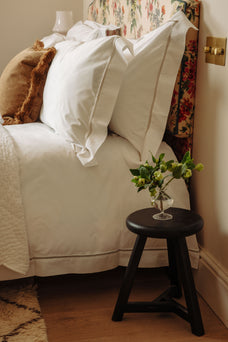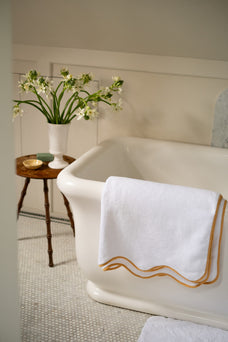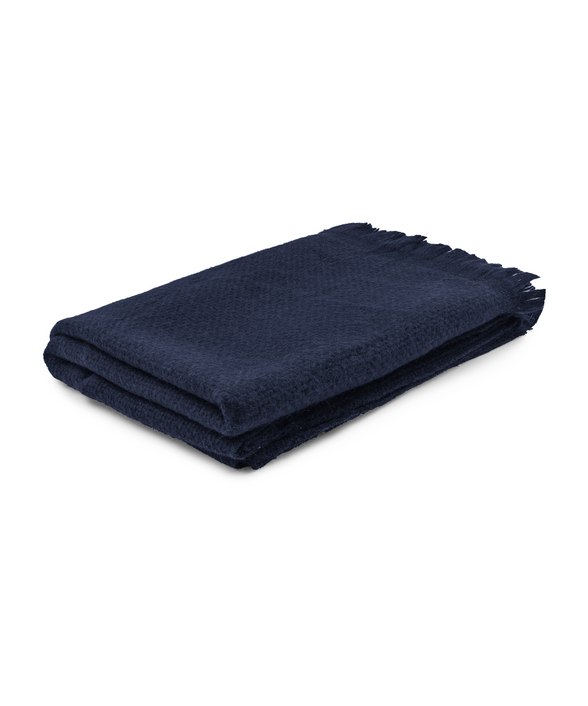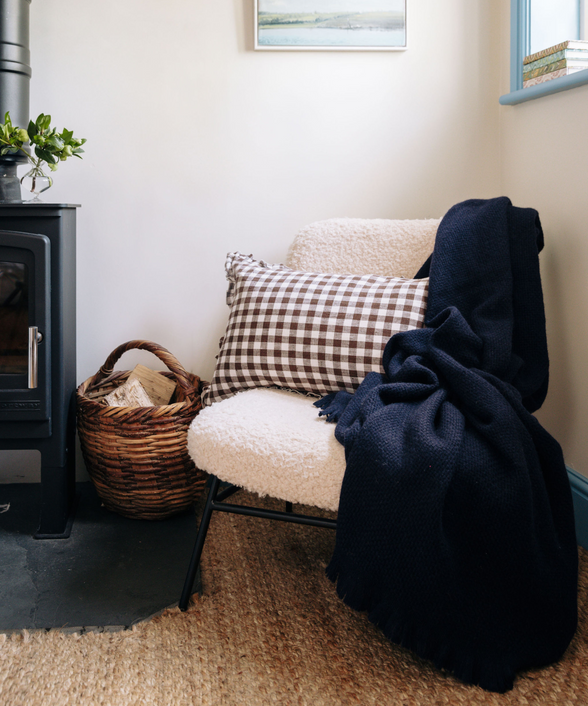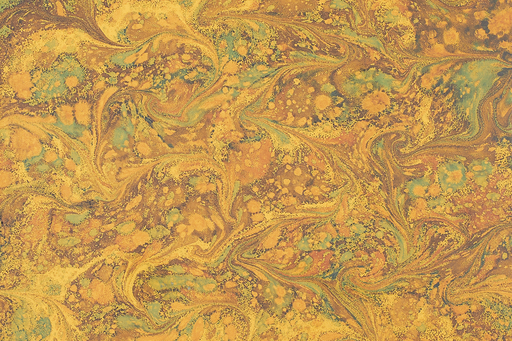Interestingly, alpaca ‘wool’ isn’t, strictly speaking, wool. It has many of the same qualities of wool (which we’ll go into in more detail below) but it is a dry, hollow fibre that lacks lanolin – the waxy substance that is secreted by wool-yielding animals. It’s more of a fleece, really, but is usually referred to as wool (and we will continue to do so for the purpose of this article).
Expertly crafted by a specialist vertical mill in Peru, an area of provenance for alpaca wool, our basketweave throws are made to exacting standards. The world’s best, innovative Italian and German machinery for weaving is combined with the country’s age-old textile expertise. Further, sustainability accreditations for our range include Fair Trade, Oeko-tex 100 and GRI certifications. Exceptionally soft and lustrous baby alpaca wool (the very finest, softest alpaca fibres) is woven into our throws, featuring a joyful basketweave design and subtle fringing.
The many benefits of alpaca wool
Alpaca wool is a popular choice for both clothing and homeware, due to its many benefits. Some of the advantages of alpaca fibres are similar to those of other wools (especially merino) but it has many exclusive benefits which are contributing to its popularity. We have outlined these in detail below.
Alpaca wool is soft and itch-free
We mentioned lanolin earlier. This is a wax secreted from the glands of wool-bearing animals which protects both the wool and skin from weather such as rain and wind – this protection extends to items made from the wool. However, lanolin allergies or sensitivities are common, causing itching, inflammation and redness when the skin is exposed to wool. Alpaca wool lacks lanolin, making its fibres hypoallergenic and ideally suited to anyone who can’t usually expose their skin to wool.
Alpaca wool is also known for its softness, and is often compared to cashmere. Alpaca fibre scales lie flatter to the fibre shaft than other wools, making it feel less prickly to the touch. A combination of its flatter fibres and lack of lanolin means that it also holds less external irritants such as dust.
Alpaca wool is water, wind, odour and stain resistant
Other wools are considered waterproof due to the presence of lanolin, however alpaca fibres have water resistant capabilities due to their small and hollow air pockets. Alpaca wool holds less weight in moisture and dries quicker when it does get wet. It is also naturally wind-proof – for our throws, this means that they are especially warm and snuggly. Both of these qualities have evolved to protect the animals from the elements in their natural habitat, but they remain even after the wool has been sheared and knitted.
Alpaca wool, like other natural fibres, contains keratin which is known for its antibacterial properties. Keratin helps to break down bacteria, which would otherwise cause unpleasant odours. The minuscule scales on the fibre shafts also repel stains and make it easy to clean up spills.

Alpaca wool is biodegradable and sustainable
Alpaca wool is biodegradable and a renewable source when it is natural and untreated. This means it breaks down and decomposes naturally, without leaving a trace on the environment. It’s produced organically, and alpacas have soft, padded feet that don’t damage the land they are grazed on. What’s more, it is a more ethical choice of material, as most alpacas fibres – 100% of Rebecca Udall Alpaca fibres – are sourced from Peru, supporting the economies of local communities.
Alpaca wool is naturally insulating
Unlike merino wool which is composed from solid fibres, the hollow make-up of alpaca wool is lightweight (it’s actually three times lighter than merino wool). This hollow structure allows the fibres to tap microscopic pockets of air that naturally insulate the wool – retaining heat when you need it and expelling it when you don’t. Cotton holds onto moisture and cools you down by pulling heat away from your body, whereas alpaca’s water retention rate is around 10%. Although the unique structure of alpaca fibres that locks in heat when you need it also expels moisture when you sweat, helping to keep you cool in hot temperatures. It is ideal on a bed as it helps to regulate temperatures as you sleep.
Alpaca wool is strong and long lasting
All wools are naturally long-lasting, but alpaca wool is especially durable. Its fibres can bend up to 20,000 times before breaking. It is the strongest wool available, even more so than cashmere or merino wools.
Discover our basketweave alpaca throws, available in a choice of four colours.



